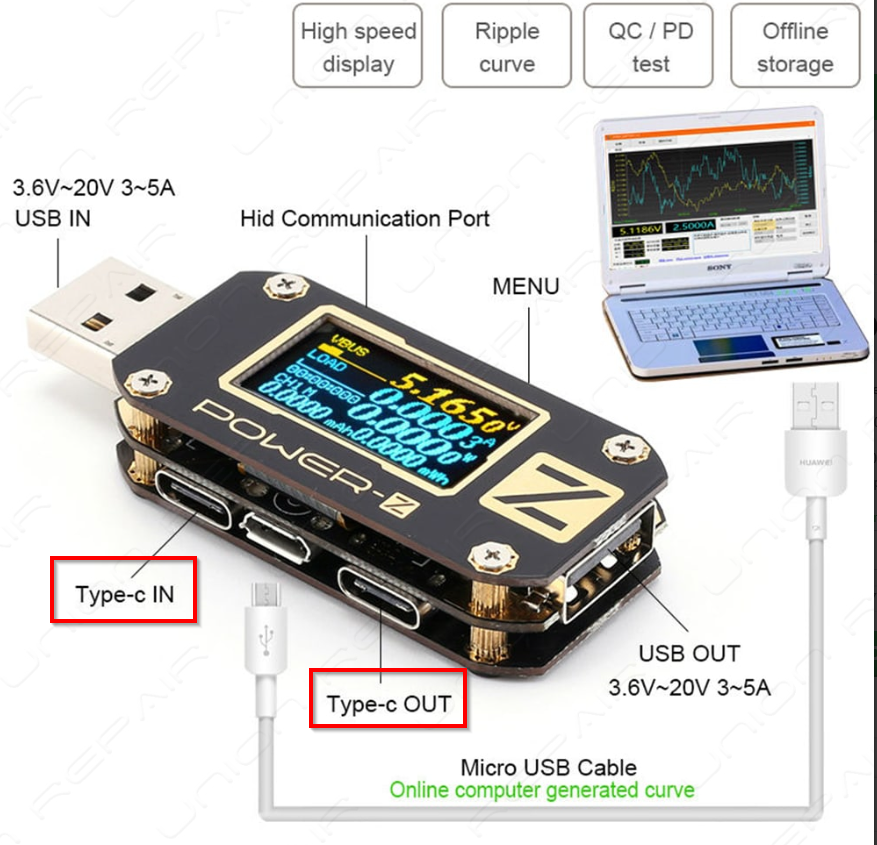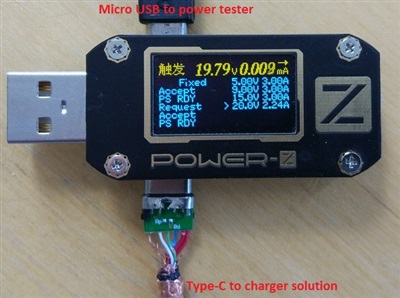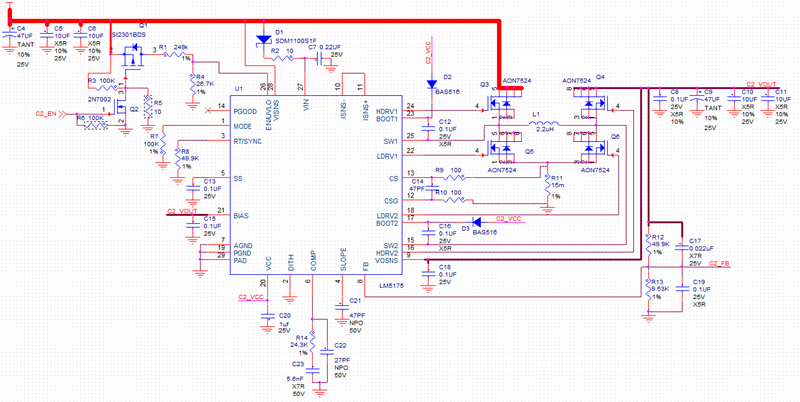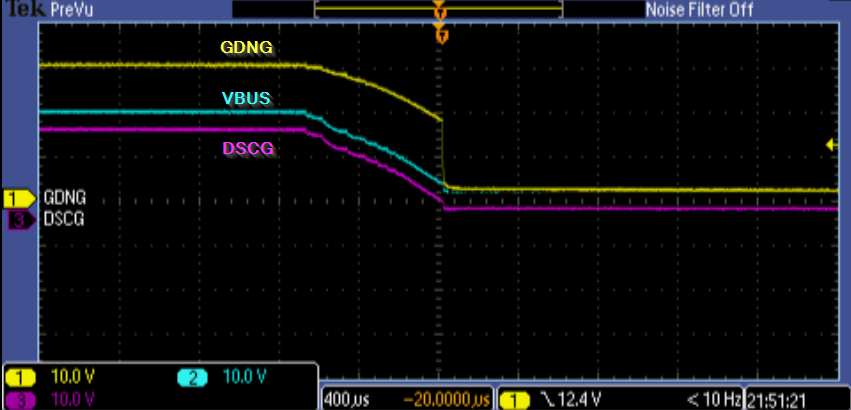Other Parts Discussed in Thread: LM5175, TPS25740
Hi!
I have built PCB based on TPS25740B-741 Evaluation Module.
Problem I am facing is that if I apply load on Type-C port TPS25740B is disconnecting output and falling back to 5V. Then more voltage then less current is necessary to cause this. 15V need 2.6A and 20V need 0.7A
Disconnection is caused by nGD falling edge. But nGD is connected to VAUX and I don't understand why VAUX is going low for 15ms at some point.
There is no voltage drop, I have disabled current measurement by shorting ISNS to VBUS there is no overvoltage happening.
I am even connecting load to LM5175 output directly.
Does someone have ideas?








